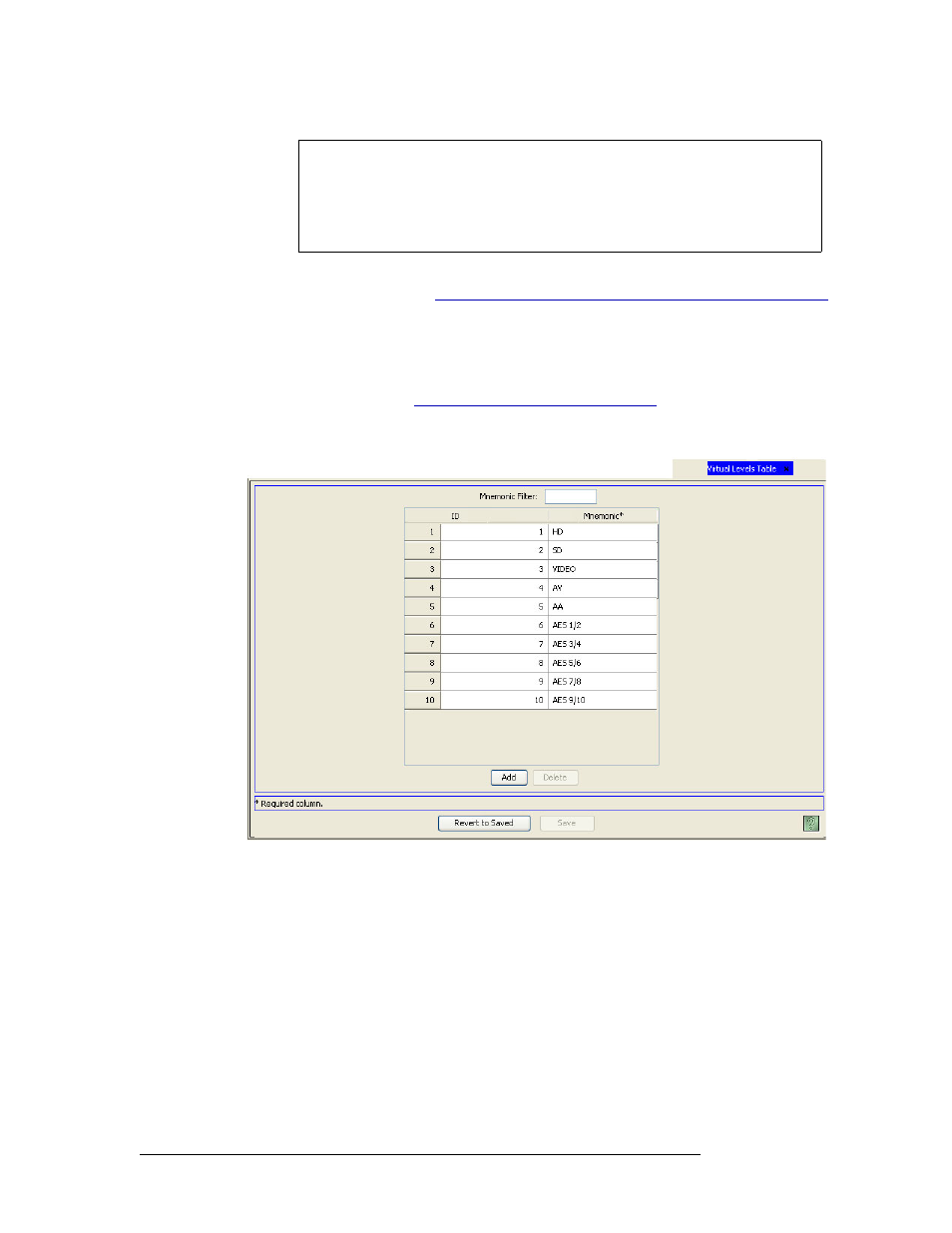Level sets – Grass Valley NV9000-SE v.3.0 User Manual
Page 156

136
Rev 3.0 • 25 Mar 10
8. Level Sets
Updating Level Sets
If creating virtual levels, but not adding them to level sets, it is recommended that the ‘Virtual Lev-
els’ table be used, as described in
How to Create a Virtual Level Using the ‘Virtual Levels’ Table
on page 136. Virtual levels can be created through the ‘Level Sets’ page, but it must be done as part
of creating a new level set or updating an existing level set.
How to Create a Virtual Level Using the ‘Virtual Levels’ Table
1 Launch NV9000-SE. (See
Launching and Exiting the Application
2 From the Navigation area, select the ‘Views’ pane and then ‘Virtual Levels’. The ‘Virtual Lev-
els’ table appears:
Figure 8-20. Virtual Levels Tables
3 Click
Add
. A blank row is added to the list of virtual levels.
4 In the blank row, click in the field in the ‘Mnemonic’ column to activate it and enter a name for
the virtual level. The name must be unique.
5 Click
Save
. An ‘ID’ number automatically appears for the newly added virtual level.
Or
To revert to the previously saved configuration, click
Revert to Saved
.
6 Click
X
on the window title tab to close the table.
Warning
When a virtual level is removed, the mapping between the virtual level and phys-
ical level(s) is unmapped. This means that if no other virtual level is mapped to a
signal type, all devices managing that signal type may no longer function cor-
rectly. Be sure when removing a virtual level that all devices, routers and control
panels using that virtual level are not negatively impacted.